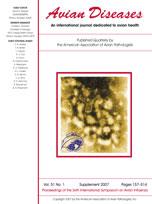Outbreaks of highly pathogenic avian influenza (HPAI) (2000–2003) resulted in 50 million EU birds culled or dead. The circulation of H5N1 in Asia could represent the origin of a human pandemic. Questions have been raised to combat the ongoing AI crisis. HPAI H5N1 has spilled over to resident and migratory wild bird populations which could represent a means of the virus reaching the EU, but lack of data make any forecast imprudent. Poultry holdings located close to migratory bird breeding and resting sites are considered at greater risk of exposure and methods to prevent exposure should be implemented. Legal safeguards for importation of poultry commodities currently only apply to HPAI and rely on detection of clinical signs that may not be observable during incubation period. Illegal imports represent an additional risk. Insufficient data on the effectiveness of commodity processing are available and few indications can be deducted. Biosecurity is the primary tool to prevent AI introduction and secondary spread. Massive spread was observed in densely populated poultry areas resulting in vaccination programs. Vaccination should be used to support eradication together with enhanced biosecurity and restriction measures, which shall also be implemented in case of prophylactic vaccination. Animal welfare aspects of AI include use of appropriate culling methods, correct vaccine application, and availability of trained staff. EFSA has recently set up a new scientific work group to further assess the risk of HPAI introduction and spread posed in particular by wild, migratory birds, as well as further follow-up of recent AI developments.
How to translate text using browser tools
1 March 2007
EFSA Scientific Risk Assessment on Animal Health and Welfare Aspects of Avian Influenza (EFSA-Q-2004-075)
J. Serratosa,
O. Ribó,
S. Correia,
M. Pittman
ACCESS THE FULL ARTICLE

Avian Diseases
Vol. 51 • No. s1
March 2007
Vol. 51 • No. s1
March 2007
avian influenza
biosecurity
control
diagnosis
poultry
risk assessment
surveillance




